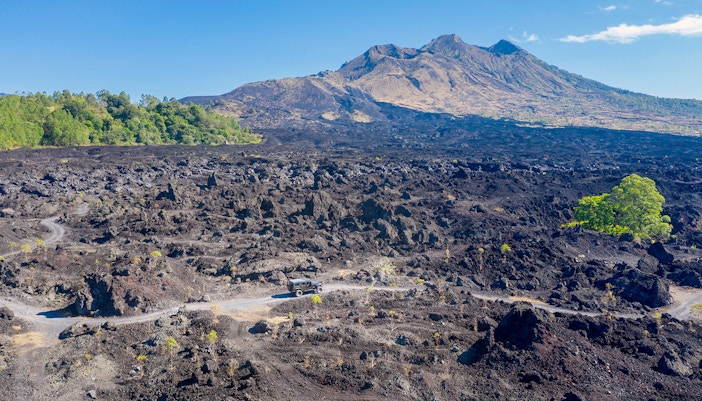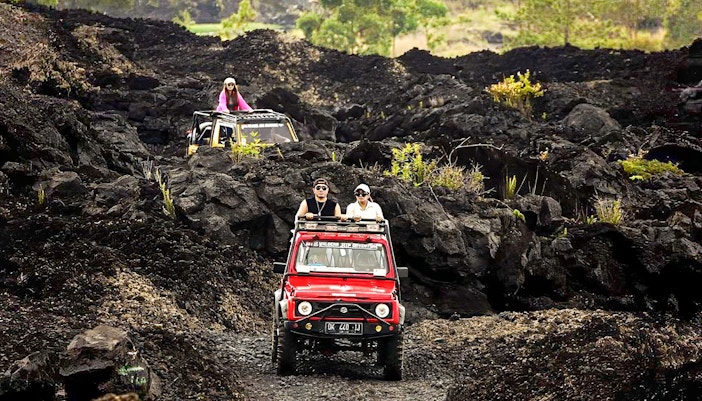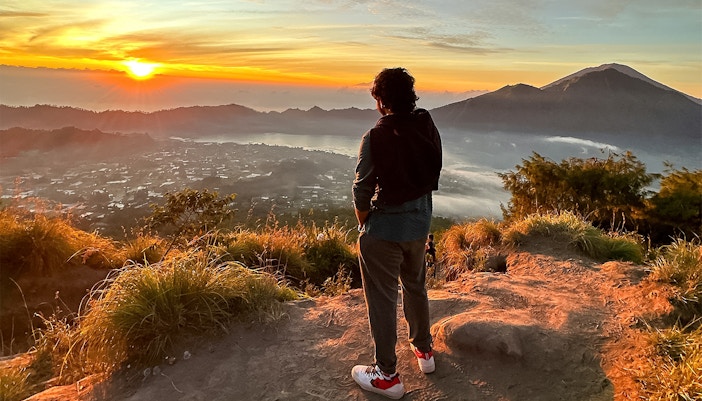Tips for visiting Mount Batur Black Lava fields
1. Book a tour or go with a local guide: Whether you're hiking or riding in a 4WD jeep, a licensed guide makes all the difference. They know the terrain, monitor volcanic alerts, and take you to less-visited lava spots like caves or ridgelines safely.
2. Wear the right gear: Sturdy shoes with grip are essential. The lava rocks are uneven and sharp in places. Dress in layers to adapt to chilly mornings and warmer mid-morning weather.
3. Pack essentials: Carry water, snacks, sunscreen, and a flashlight or headlamp if hiking before dawn. Most local vendors or guides won’t accept cards, so make sure you carry cash.
4. Stay safe around wildlife and terrain: The terrain can be rough, especially along ridgelines. Watch your footing and be mindful of monkeys near the summit, they're known to snatch bags or food.
5. Don’t miss the hot springs nearby: After your trek or jeep ride, consider visiting the nearby hot springs to unwind. They’re naturally heated and a soothing way to cap off your morning adventure.
6. Avoid pushy sellers or unofficial guides: Stick to tours arranged through hotels or verified operators. The trailhead area can attract scams or unsolicited “guides” charging bogus fees.




